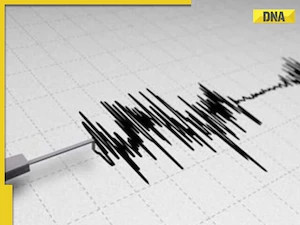On November 21, 2025, a significant seismic event occurred in Bangladesh, with a magnitude 5.7 earthquake striking the region. The earthquake, which hit at a depth of 10 kilometers, was felt across eastern Bangladesh and neighboring areas, including Kolkata, India. This event has raised concerns about seismic activity in the region and its potential impact on densely populated areas like Dhaka and Kolkata.
The earthquake's epicenter was located in Narsingdi, northeast of Dhaka, causing widespread panic as buildings shook and residents evacuated as a precautionary measure. Fortunately, no casualties have been reported so far, but the incident highlights the vulnerability of the region to seismic events. Bangladesh's location at the convergent boundary between the Indian Plate and the Eurasian Plate, along with the minor Burma Plate, makes it prone to frequent earthquakes.
Seismic activity in Bangladesh is not uncommon, with the region experiencing numerous earthquakes over the past year. According to recent data, Bangladesh has had 21 earthquakes of magnitude 1.5 or greater in the past 365 days, indicating a high level of seismic activity. The latest earthquake, although significant, is part of a pattern of frequent seismic events that have occurred in the region.
The earthquake's impact was felt not only in Bangladesh but also in neighboring West Bengal and Northeast India, where tremors were reported. This underscores the interconnected nature of seismic activity in the region and the need for coordinated efforts in monitoring and preparedness. The Bangladesh Meteorological Department has been actively monitoring seismic activity, providing real-time updates and issuing alerts as necessary.
In response to the earthquake, residents in affected areas were advised to evacuate buildings and move to open spaces as a precautionary measure. The lack of reported casualties is a testament to the effectiveness of emergency protocols and the swift response of local authorities. However, the event serves as a reminder of the importance of preparedness and the need for continued vigilance in monitoring seismic activity in the region.
As Bangladesh continues to experience seismic events, it is crucial for the government and relevant authorities to enhance their preparedness and response mechanisms. This includes improving infrastructure, conducting regular drills, and ensuring that the public is well-informed about safety protocols during earthquakes. The recent earthquake in Bangladesh serves as a wake-up call for the region to prioritize seismic safety and preparedness, ensuring that future events do not result in significant loss of life or property.



